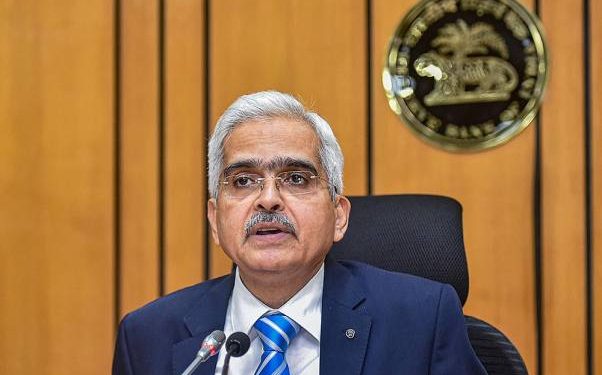Mumbai: To support a durable as well as lasting economic recovery amid concerns over the Omicron variant of coronavirus, the Reserve Bank of India Wednesday retained its key lending rates along with the growth-oriented accommodative stance during the penultimate monetary policy review of FY22.
The Monetary Policy Committee (MPC) of India’s central bank voted to maintain the repo rate, or short-term lending rate, for commercial banks at 4 per cent.
Repo Rate (RR) is the rate at which the RBI lends money to commercial banks or financial institutions against government securities.
The reverse repo rate was also kept unchanged at 3.35 per cent, and the marginal standing facility (MSF) rate and the ‘Bank Rate’ at 4.25 per cent.
It was widely expected that MPC would hold rates along with the accommodative stance.
In a virtual address after the MPC’s bi-monthly meet, RBI Governor Shaktikanta Das said that economic recovery disrupted by the second wave of the pandemic is gaining traction.
However, this recovery is still not strong enough to be self-sustaining and durable, thereby, supportive policy measures such as accommodative stance are required, he added.
With the RBI retaining India’s FY22 GDP growth projection at 9.5 per cent, Das pointed out that GDP is expected to grow at 6.6 per cent in Q3, 6 per cent in Q4, 17.2 per cent in Q1FY23, and at 7.8 per cent for Q2FY23.
“Overall, the recovery that had been interrupted by the second wave of the pandemic is regaining traction, but it is not yet strong enough to be self-sustaining and durable. This underscores the vital importance of continued policy support,” he said.
“Downside risks to the outlook have risen with the emergence of Omicron and renewed surges of Covid-19 infections in a number of countries.
“Furthermore, the CPI-based inflation is projected at 5.3 per cent for FY22. The CPI inflation is expected to ease to 5 per cent in Q1FY23 and stay at 5 per cent in Q2FY23.
“In the current situation, it is important to keep inflation aligned with the target while focusing on a robust growth recovery,” Das said.
“Simultaneously, the Reserve Bank remains cognisant of the need to ensure that financial conditions are rebalanced in a systematic, calibrated and well-telegraphed manner while preventing build-up of financial stability risks,” he added.
India Inc welcomed the MPC’s move.
“The status quo on the repo rate while continuing an accommodative stance was broadly expected especially in light of the latest global developments and the emergence of a new variant of concern,” said FICCI President Uday Shankar.
“The latter poses a major downside risk going ahead and it remains extremely critical to maintain caution. In this context, RBI’s policy statement is reassuring.”
State Bank of India Chairman Dinesh Khara said: “The RBI policy announcement addresses monetary policy and money separately, with the rate-setting divorced from calibrated liquidity management. The growth and inflation outlook look delicately poised even as the Omicron virus threat has put an element of uncertainty all around.
“The announcement regarding the capital infusion in overseas branches without prior approval of the RBI will bring in operational and seamless flexibility. The decision to review the payment landscape and further fine-tuning UPI transfer for small value transactions could act as an enabler of mass digitisation. The clarification regarding the transition from ‘LIBOR to ARR’ is also a welcome move.”
PHD Chamber of Commerce and Industry President Pradeep Multani said the accommodative policy stance at this juncture would not only pave the way for a double digit GDP growth in the current year 2021-22, but will also help in creating a strong, sustainable and vibrant economy going forward.
Assocham Secretary General Deepak Sood said: “We completely agree with the statement of Governor Shaktikanta Das that even as the economic recovery has been regaining traction, it is not yet strong enough to be self-sustaining and durable.”
“Hence, continuing monetary policy support to the growth momentum is of utmost importance, especially when there are signs of pick-up in private investment.”
IANS







































